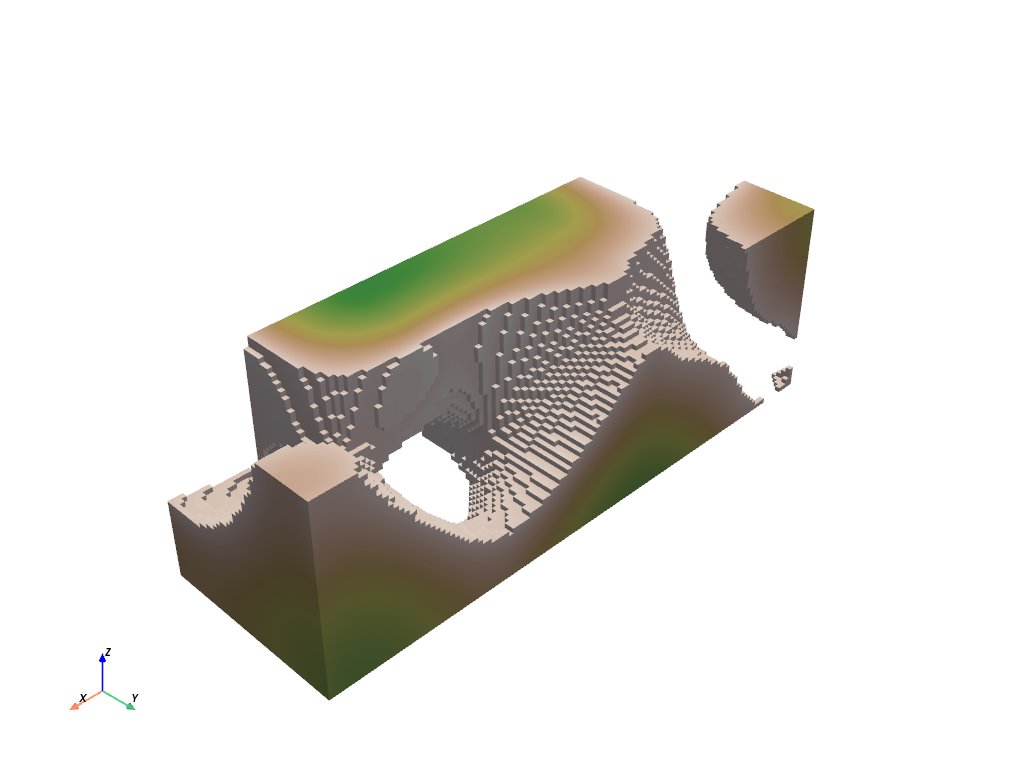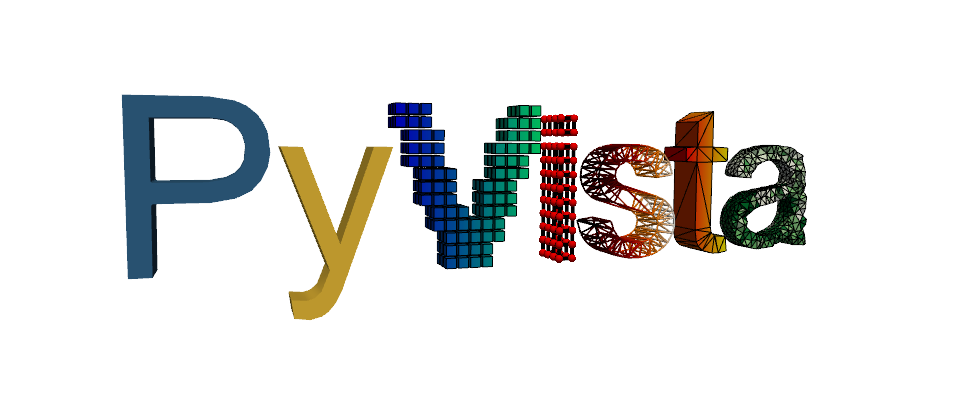Note
Go to the end to download the full example code. or to run this example in your browser via Binder
Sample Function: Perlin Noise in 3D#
Here we use pyvista.core.utilities.features.sample_function() to sample
Perlin noise over a region to generate random terrain.
Video games like Minecraft use Perlin noise to create terrain. Here, we create a voxelized mesh similar to a Minecraft “cave”.
import pyvista as pv
Generate Perlin Noise over a 3D StructuredGrid#
Feel free to change the values of freq to change the shape of
the “caves”. For example, lowering the frequency will make the
caves larger and more expansive, while a higher frequency in any
direction will make the caves appear more “vein-like” and less open.
Change the threshold to reduce or increase the percent of the terrain that is open or closed
freq = (1, 1, 1)
noise = pv.perlin_noise(1, freq, (0, 0, 0))
grid = pv.sample_function(noise, [0, 3.0, -0, 1.0, 0, 1.0], dim=(120, 40, 40))
out = grid.threshold(0.02)
out
/home/runner/work/pyvista-tutorial/pyvista-tutorial/tutorial/04_filters/bonus/f_sampling_functions_3d.py:27: PyVistaDeprecationWarning:
f_sampling_functions_3d.py:27: Argument 'bounds' must be passed as a keyword argument to function 'sample_function'.
From version 0.50, passing this as a positional argument will result in a TypeError.
grid = pv.sample_function(noise, [0, 3.0, -0, 1.0, 0, 1.0], dim=(120, 40, 40))
color limits without blue

Total running time of the script: (0 minutes 0.615 seconds)
